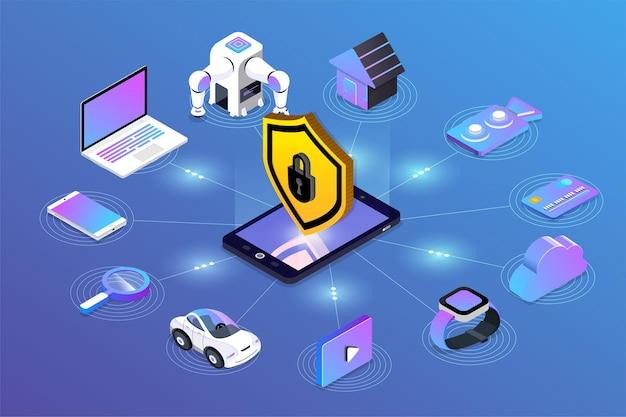In the world of computer architecture and data processing, it’s not uncommon to come across terms that can leave us scratching our heads. One such term is the “Multiplexed Address Data Bus.” But fear not, because in this blog post, we are going to demystify this confusing concept and break it down into simple and understandable terms.
You may have heard about buses – not the ones that take you to work or school, but the ones that shuttle data within a computer system. In its simplest form, a bus is a communication pathway that transfers information between different components of a computer. But what exactly is a multiplexed address data bus? How does it function? And what role does it play in the smooth operation of a computer system? We’ll answer all these questions and more as we dive deeper into this intriguing topic.
So, if you’re ready to unravel the mysteries of the multiplexed address data bus, fasten your seatbelts and get ready for an insightful journey into the inner workings of computer architecture!

What is a Multiplexed Address Data Bus
The multiplexed address data bus, affectionately known as the MAB, is like the secret weapon of the digital world. It’s the unsung hero that facilitates communication between the processor (the brains of the operation) and other components, such as memory.
Unlocking the Mysteries of the MAB
Imagine the MAB as a conveyor belt, shuttling address and data information back and forth. But here’s the twist: instead of dedicated lanes for address and data, the MAB combines them onto a single pathway. It’s like a double agent, carrying out multiple tasks with style and efficiency.
Address and Data, Sitting in a Tree
In the wonderful land of binary, addresses represent the location of data in memory. Meanwhile, data refers to the actual information stored at those addresses. In simpler terms, addresses are like street names, while data is like the houses on those streets.
With the MAB, address and data happily hold hands and travel together. One minute they’re addresses, indicating where something is, and then the next minute they transform into data, revealing the juicy information that resides at that location. It’s like a magical disguise party!
Multiplexing: The Art of Juggling
You might wonder, “Why would we combine address and data in the first place?” Well, my curious friend, it’s all about optimizing resources and efficient communication. By sharing the same pathway, the MAB reduces the number of physical connections required, making the whole system more compact, cost-effective, and dare I say, sexy.
The Dance of Time
You see, in the digital realm, time is crucial. Every nanosecond counts. The MAB has to perform its multiplexing magic without causing delays or confusion. It gracefully switches between address and data, ensuring they take turns, never colliding like clueless tourists on the sidewalks of New York City.
The Conductor Never Misses a Beat
Behind the scenes, the processor acts as the conductor, orchestrating the MAB’s performance. It sends out signals to indicate whether it’s address or data time. The MAB, being the dutiful performer it is, listens attentively and dances accordingly, flawlessly delivering the cues. It’s a partnership made in digital heaven.
No Drama, Just Multiplexing
Now, you might think, “Won’t combining address and data lead to chaos?” Ah, a valid concern! But fear not, for the MAB has its own mechanisms in place to prevent any mix-ups. It has control signals that ensure each component understands when it’s their turn to shine on the MAB runway. It’s like an organized ballet with zero room for missteps.
A Multiplexing Feast for Big Brains
The MAB is particularly beneficial in large-scale systems, where space and efficiency reign supreme. By streamlining the communication process, the MAB allows processors to work their magic, accessing the vast expanse of memory faster than a hungry person at an all-you-can-eat buffet. It’s like having a personal teleportation device for data.
So, my dear reader, the multiplexed address data bus is more than just a fancy term. It’s a brilliant solution that combines the powers of address and data, optimizing resources and ensuring efficient communication. The MAB performs its multiplexing magic with the grace of a ballet dancer, all while assisting processors in accessing memory with lightning speed. Next time you encounter the MAB, give it a nod of appreciation for its unsung heroics in the world of digital communication.

FAQ: What is multiplexed address data bus
What do you mean by multiplexed address and data lines in 8085
In the context of the 8085 microprocessor, multiplexed address and data lines refer to a technique that allows the same set of physical lines to be used for transmitting both address and data information. This means that the same wire can carry either an address or data signal at a given time, depending on the control signals.
What are Class A vehicles
Class A vehicles are typically large motor vehicles such as buses, trucks, and tractor-trailers. These vehicles are designed to transport goods or passengers and usually require a special driver’s license to operate. So, if you’ve ever dreamed of driving a massive bus around, you’ll need a Class A license to make that dream a reality!
What is the full form of bus
Contrary to popular belief, the word “bus” is not an acronym. It actually comes from the Latin word “omnibus,” which translates to “for all.” So, next time you hop on a bus, you can proudly say that you’re riding a vehicle meant for everyone!
What is a Type C bus
A Type C bus refers to a specific classification of school buses based on their design and dimensions. These buses are typically used to transport school children and are characterized by their characteristic “flat nose” design. In simple terms, when you imagine a traditional yellow school bus, you’re most likely picturing a Type C bus!
What is a multiplexed address data bus
Ah, the multiplexed address data bus! It’s essentially the highway system of a microprocessor. In technical terms, it’s a shared set of lines that carries both address and data information. Think of it as a busy intersection where the traffic (i.e., the address and data signals) take turns to get through. This clever technique allows for efficient transmission of information in a compact manner, ensuring everything runs smoothly within the microprocessor.
What type of vehicle is a bus
A bus is a versatile vehicle that can take on various forms depending on its purpose. From commuter buses whisking people to work, to long-haul coaches traversing the country, and even city buses zigzagging through busy streets—the bus family is full of diversity! So, whether you’re commuting, embarking on a road trip, or exploring a new city, buses have got you covered, offering a convenient and eco-friendly way to get around.
And there you have it, a comprehensive FAQ-style guide to understanding the multiplexed address data bus! Now you’re armed with the knowledge to impress your friends with your understanding of microprocessor architecture and your ability to crack jokes about buses. Happy learning and happy commuting!
